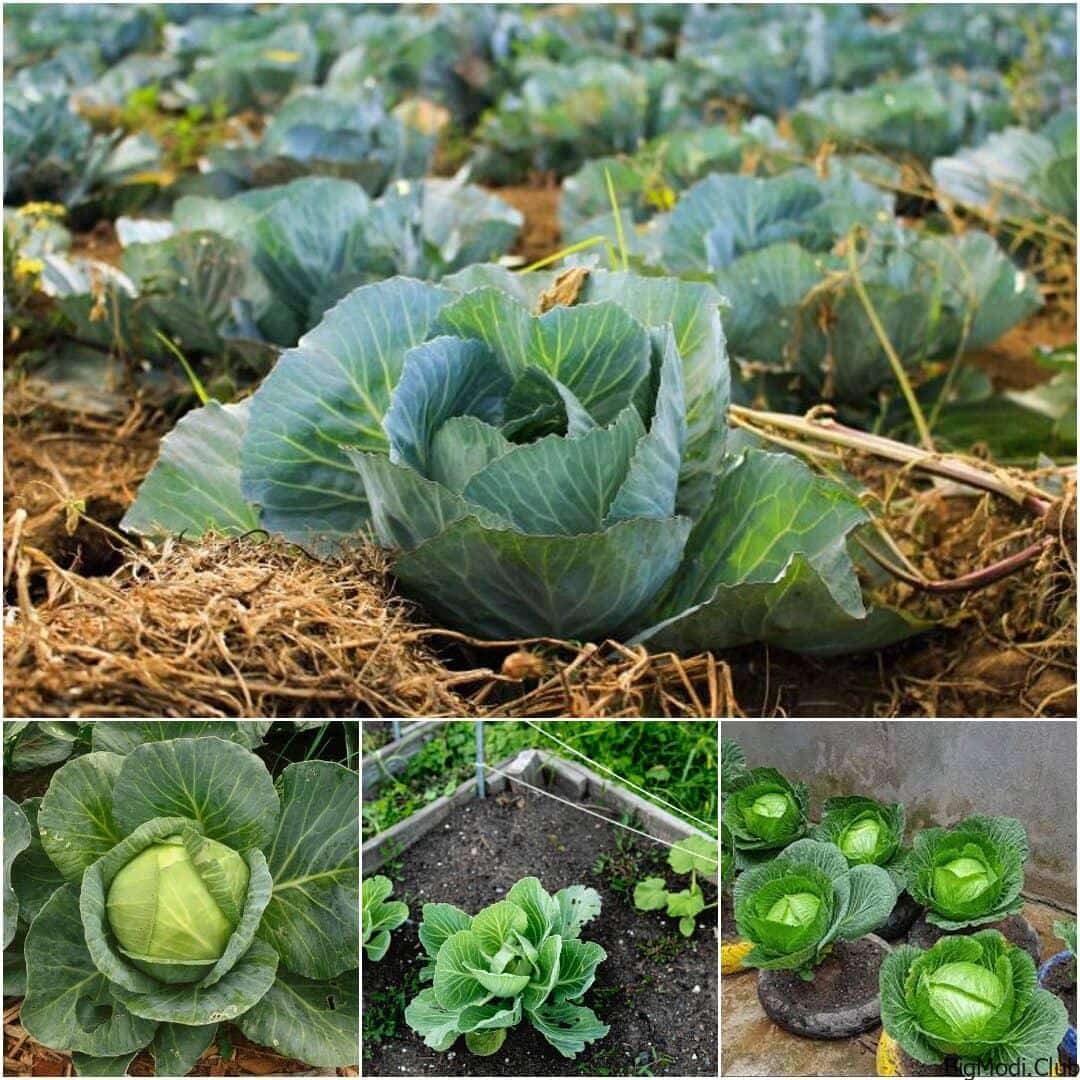Cabbage, a versatile member of the brassica family, offers gardeners a rewarding and productive crop. From the crisp, refreshing taste of spring cabbages to the hearty, robust winter varieties, understanding how to grow cabbage can transform your gardening experience. In this guide, we’ll explore different types of cabbage, how to manage pests and diseases, and tips for planting, caring for, and harvesting this nutritious vegetable.
How to Grow Cabbage: A Comprehensive Guide
Cabbage comes in a variety of types, each suited to different seasons and growing conditions. Understanding these types can help you choose the right variety for your garden and ensure a continuous supply of fresh, nutritious cabbage throughout the year. From the early harvests of spring cabbages to the hardy winter varieties, each type offers unique benefits and flavors. Let’s explore the different types of cabbage and how they can enhance your gardening experience.
Types of Cabbage
Spring Cabbages
Spring cabbages are known for their small, dense, pointed heads. They are typically sown in late summer to overwinter and are harvested from mid-spring to mid-summer. Imagine a garden bursting with fresh, tender greens as spring arrives—this is what you can achieve with spring cabbages.
Summer Cabbages
Available in various shapes and sizes, summer cabbages are bred to withstand the heat. Sow these from late winter to mid-spring and enjoy harvesting from mid- to late summer. Picture a garden filled with robust cabbages thriving under the summer sun.
Autumn Cabbages
Autumn cabbages produce large heads and require more space. Sow these in mid-spring and harvest before winter sets in. Some varieties can even be stored for winter use, providing you with fresh cabbage when other vegetables are out of season.
Winter Cabbages
Winter cabbages, often featuring crinkly Savoy or smooth drumheads, can be red-tinged or purple. Sow them in late spring, and they can remain in good condition for months, or be stored in a cool, frost-free place. These hardy varieties ensure that you have fresh cabbage even during the colder months.
Pest and Disease Control
Protecting your cabbage crop from pests and diseases is crucial for a successful harvest. Cover your cabbages with netting or transparent fleece to shield them from pests. Additionally, rotating crops annually can help prevent the build-up of diseases. Think of crop rotation as a preventative measure, much like giving your garden a fresh start each year.
Choosing Varieties
When selecting cabbage varieties, consider those with the RHS Award of Garden Merit (AGM). These have demonstrated superior performance in trials. If you’ve faced issues with clubroot or downy mildew in the past, opt for disease-resistant varieties. This approach not only enhances your garden’s yield but also reduces the risk of plant diseases.
Buying Seeds and Plants
Cabbage seeds are readily available in garden centers and online. While buying young plants in spring and summer is an option, they tend to be more expensive and offer a limited variety. Seeds, on the other hand, give you the flexibility to choose from a broader selection and are generally more economical.
Preparing the Ground
Cabbages thrive in sunny locations with firm, fertile, and free-draining soil. Before planting, enrich the soil by adding compost and, if necessary, lime to raise the pH above 6. This will help prevent clubroot disease and create an optimal growing environment. Imagine your garden soil as a canvas that needs proper preparation to support vibrant, healthy cabbage plants.
Sowing
1-Indoors
Start your cabbage seeds in modular trays indoors for an early start. This method allows you to get a jump on the growing season and protect your seedlings from pests.
2-Outdoors
If sowing outdoors, do so in drills, covering the seeds to shield them from slugs and snails. Thin out seedlings as they grow to ensure proper spacing. This approach helps manage space and fosters healthy plant development.
Transplanting
Transplant young cabbage plants to their final location when they reach about 15 cm tall. Ensure proper spacing based on the type and size of the cabbages. By transplanting at the right time and distance, you allow your cabbages to grow to their full potential without overcrowding.
Plant Care
Caring for your cabbages involves regular watering, mulching to retain moisture, and feeding with a nitrogen-rich fertilizer. Keep the area free from weeds and protect your plants from pests. A well-maintained cabbage patch is not only visually pleasing but also maximizes your yield.
Harvesting
Harvest your cabbages when they form firm heads of the desired size. For a prolonged harvest, winter cabbages can be stored longer than other types. To pick your cabbages, use a sharp knife to cut through the stem just above ground level. This technique ensures a clean cut and helps maintain the quality of the cabbage.
Storage
Cabbages can be stored in the refrigerator for up to a week. For winter varieties, consider storing them in a cool, dry place where they can last several months. Proper storage extends the shelf life of your harvest, allowing you to enjoy fresh cabbage long after the growing season ends.
Problems
To tackle common issues, cover cabbages with insect-proof mesh or fleece to deter pests. Using brassica collars around the stems can help keep cabbage root fly at bay. Additionally, avoid planting cabbages in the same spot each year to reduce the risk of disease build-up. These preventive measures are essential for maintaining a healthy, productive cabbage crop.
FAQs
How long does it take to grow a cabbage?
Cabbages typically take about four to six months to mature, depending on the variety and growing conditions. Spring cabbages may be ready in around four months, while winter cabbages can take up to six months. The exact time can vary based on factors such as climate, soil quality, and care.
How do you grow cabbage for beginners?
For beginners, growing cabbage can be straightforward. Start by selecting a suitable variety for your climate and season. Prepare a sunny spot with firm, fertile, and well-draining soil. Sow seeds indoors in modular trays or directly outdoors in drills. Thin seedlings to provide adequate space for growth. Regularly water, mulch to retain moisture, and feed with a nitrogen-rich fertilizer. Protect plants from pests with netting or fleece, and harvest when the heads are firm and the desired size.
Does cabbage need full sun?
Yes, cabbage thrives best in full sun. It needs at least six to eight hours of direct sunlight each day to grow strong and healthy. Adequate sunlight helps in the development of firm heads and improves overall plant vigor.
What makes cabbage grow faster?
To promote faster growth of cabbage, ensure it receives consistent moisture and a balanced, nitrogen-rich fertilizer. Proper spacing between plants allows for better air circulation and reduces competition for nutrients. Additionally, using mulch helps retain soil moisture and suppress weeds, contributing to quicker growth. Providing optimal growing conditions, including full sun and well-drained soil, also accelerates development.


